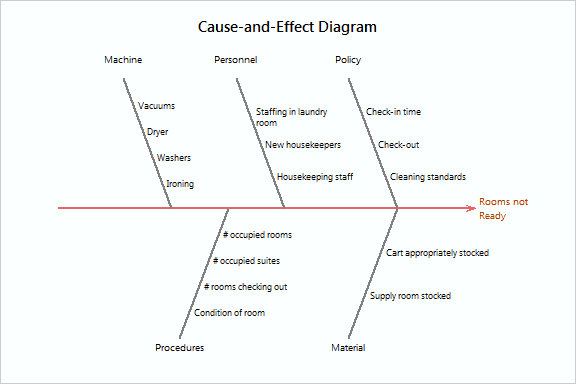
Brainstorming tool that allows you to investigate various causes that influence a specific effect. Developing a cause-and-effect diagram (C&E diagram) with your team can help you identify areas where there may be problems, and compare the relative importance of different causes.
For example, you want to investigate why many of your hotel's rooms are not ready for check-in at 4:00PM. Brainstorm reasons with your team and use a cause and effect diagram to categorize the reasons; you can then prioritize problem areas and develop improvement ideas.
|
|
Causes in a C&E diagram are frequently arranged into six major categories for manufacturing applications: Personnel, Machines, Materials, Methods, Measurements, and Environment. Service quality applications often include Personnel, Procedures, and Policies. However, C&E diagrams can include any type of cause you want to investigate.
The C&E diagram is sometimes called a fishbone diagram because it resembles the skeleton of a fish or an Ishikawa diagram after its creator, Kaoru Ishikawa.